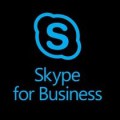Reminder: Your Skype for Business Online apps will NOT work in Microsoft Teams (act before July 31st)
This week saw Microsoft release some updated guidance for IT Administrators who have not yet migrated from Skype for Business Online to Microsoft Teams, with information on how they would be scheduling “Microsoft-assisted upgrades” in the coming weeks.
The post has several points of interest for administrators but doesn’t speak to any work needed by developers, so I thought I’d put together this post for any developers wondering if they have work to do when their environment migrates from Skype for Business Online to Microsoft Teams.
TL,DR: Yes, you do.
What won’t work any more
If you have any desktop applications which are using the Skype for Business Client SDK, these do not work with Microsoft Teams. Although there isn’t a like-for-like replacement for the Client SDK today many of the functions can be achieved via Microsoft Graph calls, although this will require a significant development effort.
If you have any web applications which are using the Skype Web SDK or UCWA, these do not work with Microsoft Teams. Depending on what you want to do here, you could look at Microsoft Graph for sending and receiving chat messages. Alternatively, if it’s audio and video in the browser you are looking to achieve, maybe the Teams Interop functionality in Azure Communication Services will help. (I also have an entire series on getting started with Azure Communication Services)
If you have any back-end services which are using the Trusted Application API (a Rest API to create & manage meetings, provide voice routing, recording, and some other functions), these will stop working if your tenant is migrated from Skype for Business Online to Microsoft Teams. There are API calls in Microsoft Graph to replicate most (all?) of this functionality, but some development will be needed.
Finally, if you are using any deep-link mobile URIs to make it easy for users to start a call or chat in mobile applications, whilst these will probably keep working and open the Skype for Business client, once your tenant has migrated to Microsoft Teams this probably isn’t what you want. There are similar deep-links in Microsoft Teams you can use instead.
What will carry on working
If you’re using Skype for Business Server (the on-premise solution) then you are unaffected by the July 31st deadline. That means that if you have UCMA applications, they will continue to work (although if you are communicating with endpoints outside of your tenant which move off Skype for Business Online they won’t be contactable).
Similarly, if you are using the Skype for Business SDN interface with your Skype for Business Server deployment, this will continue to work.
Any bots you have built with Bot Framework should work fine with Microsoft Teams, but you might need to go and add the Microsoft Teams channel, and then create a Teams app in order for users to access it. If you haven’t done this before, check out App Studio as an easy way to get started creating Microsoft Teams apps.
What new things can you do?
As well as all the new functionality in Microsoft Teams, migrating to Teams opens up the possibility of developing applications using the Microsoft Teams Development Platform. This is something I’ve been writing about since the start of Teams, so I won’t go through it all here. Instead, if you’re new to Teams development, start at my “Developing with Microsoft Teams” landing page.
In Conlusion…
July 31st is less than 3 months away, so if you haven’t done it already, now is the time to perform an audit of your applications and services, making sure that users aren’t currently relying on anything which will stop working when you move off Skype for Business Online. You don’t want to migrate your tenant to Microsoft Teams, and then find out you need to make a significant development effort in updating critical applications to new APIs and SDKs.










Do you know if Federation to Teams from CPE SFB will continue to work? Will Microsoft maintain the SFB Online Federation Gateway?